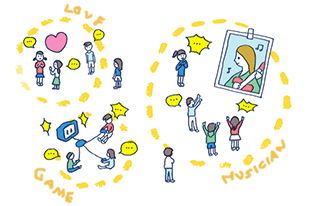Since modern Jazz holds the aesthetic of FORWARD MOMENTUM so importantly, a Jazz musician has a lot of freedom as to the notes he can or (can't) use in a solo. In theory, any tone can be used over virtually any change (whether or not its in the scale) so long as it falls in the right place.
The basic rule is this :
Notes that fall on the beat - - and especially in important places have to be the "right" notes. Notes LEADING onto those notes can (but don't have to) come from outside the scale.
This is one thing that amazed me when I first saw transcriptions of the solos of Charlie Parker (via the Charlie Parker omni-book) and other books that had transcriptions of solos by Wes Montgomery and Sonny Rollins, and years later in solo analysis after solo analysis. Basically the notes that tend to fall on the count are often nothing more than chord tones. The notes leading to them however can be very interesting, but the interesting thing is that if you analyze a lot of bebop heads (the style of Jazz that tends to have more complex melodies) you will find out that while the rhythms are tricky, except for an occasional flattened fifth, the choice of chord tones aren't strange.
"Billie's Bounce" is a great example. I think it is worth studying because it demonstrates how with just a little rhythmic hook and a passing tone here and there, you can work miracles with the most simple notes.
It is also important to be able to "target" tones by using the notes both a half step and a half step below them. For example if you want to play an A, you can play an Ab or A# on the pick-up beat before it... or even both!
anduh1= A# Ab A
ex. over F7
Run = A C Eb G
count anduh1 2 3 4
A# Ab A C Eb G
anduh1 2 3 4anduh 1+
A# Ab A C Eb G E D# Db D F
This run looks and sounds very complicated, but really its just two typical chord shapes that are very logical to play over an F7 chord...
A C Eb G (F9)
and
D F A (listen to Sonny Rollin's Tenor Madness for example.)
The run sounds complicated because the passing tones are so well incorporated they sound like they're part of some exotic or highly altered scale... and perhaps the outside tones could be giving names (b9, +7, b13) - - and while not UNTRUE, it doesn't really relect the thinking of this approach which is - - its o.k. to step OUTSIDE the scale in order to target the notes where you want to go.
There are many ways to practise this method...
One is to take your diatonic seventh chords (major, minor, dominant, half diminished) and practise them by doing "half step above, half step below" on the pick up.
You can also practise them from the third up to the ninth targeting the third.
If you want to get very fancy, using an +uh1 +uh2 +uh3 +uh4 count, you can target every tone in the chord.
You can also take the melody to a tune and practise targeting various tones off the beats.
It is also a good idea to practise targeting your tones straight through the chromatic scale.
If you like to use modes when you solo, you can practise the pattern through your favorite moves.
Then practise the patterns using various counts including...
+uh1 2 3 4
1 +uh2 3 4
1 2 +uh3 4
1 2 3 +uh4
and other variations...
The basic rule is this :
Notes that fall on the beat - - and especially in important places have to be the "right" notes. Notes LEADING onto those notes can (but don't have to) come from outside the scale.
This is one thing that amazed me when I first saw transcriptions of the solos of Charlie Parker (via the Charlie Parker omni-book) and other books that had transcriptions of solos by Wes Montgomery and Sonny Rollins, and years later in solo analysis after solo analysis. Basically the notes that tend to fall on the count are often nothing more than chord tones. The notes leading to them however can be very interesting, but the interesting thing is that if you analyze a lot of bebop heads (the style of Jazz that tends to have more complex melodies) you will find out that while the rhythms are tricky, except for an occasional flattened fifth, the choice of chord tones aren't strange.
"Billie's Bounce" is a great example. I think it is worth studying because it demonstrates how with just a little rhythmic hook and a passing tone here and there, you can work miracles with the most simple notes.
It is also important to be able to "target" tones by using the notes both a half step and a half step below them. For example if you want to play an A, you can play an Ab or A# on the pick-up beat before it... or even both!
anduh1= A# Ab A
ex. over F7
Run = A C Eb G
count anduh1 2 3 4
A# Ab A C Eb G
anduh1 2 3 4anduh 1+
A# Ab A C Eb G E D# Db D F
This run looks and sounds very complicated, but really its just two typical chord shapes that are very logical to play over an F7 chord...
A C Eb G (F9)
and
D F A (listen to Sonny Rollin's Tenor Madness for example.)
The run sounds complicated because the passing tones are so well incorporated they sound like they're part of some exotic or highly altered scale... and perhaps the outside tones could be giving names (b9, +7, b13) - - and while not UNTRUE, it doesn't really relect the thinking of this approach which is - - its o.k. to step OUTSIDE the scale in order to target the notes where you want to go.
There are many ways to practise this method...
One is to take your diatonic seventh chords (major, minor, dominant, half diminished) and practise them by doing "half step above, half step below" on the pick up.
You can also practise them from the third up to the ninth targeting the third.
If you want to get very fancy, using an +uh1 +uh2 +uh3 +uh4 count, you can target every tone in the chord.
You can also take the melody to a tune and practise targeting various tones off the beats.
It is also a good idea to practise targeting your tones straight through the chromatic scale.
If you like to use modes when you solo, you can practise the pattern through your favorite moves.
Then practise the patterns using various counts including...
+uh1 2 3 4
1 +uh2 3 4
1 2 +uh3 4
1 2 3 +uh4
and other variations...
|
|
|
|
コメント(2)
Hi ! Thanks for the pic... Try this and tell me what you think...
Phrasing is very important when using the goal note (or target note) method.
Can you rewrite melody down so that it is phrased in a way that the target notes are pick-ups leading into 3 or more different phrases (but using the same melody) ?
Phrasing is very important when using the goal note (or target note) method.
Can you rewrite melody down so that it is phrased in a way that the target notes are pick-ups leading into 3 or more different phrases (but using the same melody) ?
- mixiユーザー
- ログインしてコメントしよう!
|
|
|
|
Jazz Education (Private) 更新情報
-
最新のイベント
-
まだ何もありません
-
-
最新のアンケート
-
まだ何もありません
-























